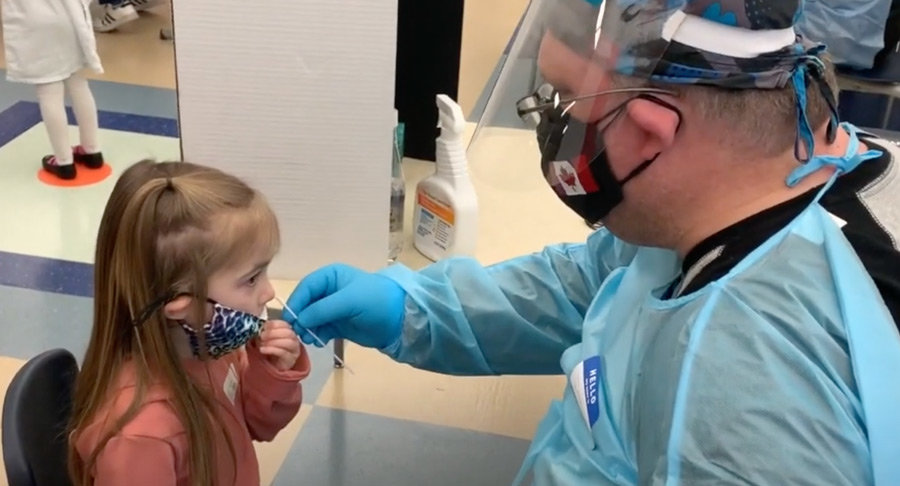
The Tacoma-Pierce County Health Department launched a COVID-19 pilot testing program at three school districts in the county in December, including Peninsula, White River and Eatonville. The pilot studied whether testing could add an extra layer of safety in addition to the steps the schools are already taking and provided baseline information about the status of COVID-19 in those schools.
“The pilot will give us another level of knowledge and a fair picture of what actually is occurring on campus with students who are positive, to allow us to isolate and prevent spread of COVID,” said Peninsula School District Assistant Superintendent Dan Gregory. “We hope it provides more information that will allow the district to open its doors to bringing more students back safely,”
TPCHD Director Anthony Chen described the pilot as a win-win-win.
“I get hate mail from those who want schools to open, but also letters of thanks for keeping people safe,” he said, noting that the department needs to balance health safety concerns with the emotional, educational and social needs of students.
Chen also said the health department seeks to reduce community transmission and increase access to testing in communities where that is a problem. The pilot was designed to address all of these issues.
The pilot kicked off with testing offered to the entire community at Key Peninsula Middle School and Gig Harbor High School Nov. 29 in collaboration with the Pierce County Department of Emergency Management. School-based testing for students and staff started the next day and continued through Dec 18. TPCHD staff analyzed findings over the winter break with results expected in January.
The pilot used a 15-minute rapid antigen test with the same technology as home pregnancy tests. All on-site students, staff and bus drivers who had signed consents were tested once a week. Anyone with a positive test was isolated and then tested with the more sensitive PCR test that has a two-day turnaround.
“We are very pleased,” Gregory said.
More than 1,000 students and staff were tested the first week and 1,624 participated the following week, according to District Information Officer Aimee Gordan. She said that student participation increased because they were able to reach more parents after the Thanksgiving holiday, and that parents were reassured once they knew students had no problems tolerating the nasal swab. More staff were able to participate when the district adjusted the testing schedule.
There were two positive tests in PSD the first week, and five the second. All cases originated from outside the schools and none occurred at schools on the Key Peninsula.
“After just the first week the data was already helpful,” Chen said. “As the rate of community transmission goes up, cases go up in churches, businesses and daycare. And so we expected cases to show up in schools. This result gives us hope. It is a great opportunity not to work just from assumptions.”
Chen said that reports suggest kids don’t get as sick and are not as likely to spread disease, but as infection rates have risen, so have hospitalizations of children.
“The number of cases in students and staff parallel the community,” he said. “And we are learning that kids are often asymptomatic, so they don’t get tested. We don’t just want to empirically say they will be fine, so send them back to school. We want to provide an extra layer of safety and mitigation so everyone feels OK.”
The Washington State Department of Health has started testing pilots in 12 other school districts, but they are based on testing those with symptoms, as well as routine testing of staff.
“Testing like ours will expand the data because we are testing asymptomatic people,” Chen said.
The current pilot was funded by $7.8 million from the CARES Act, which ended Dec. 31. The cost included the tests themselves, protective equipment, other supplies, and 60 staff. Continuing or expanding the program will require additional funding, and Chen said the department is exploring ways to decrease costs.
Chen described the pilot as “starting with training wheels” given the relatively small number of students. Starting in rural districts with less access to resources made sense, but he would like to consider expanding to Tacoma, which has a higher percentage of students with risk factors such as race, limited knowledge of English and homelessness.
UNDERWRITTEN BY THE FUND FOR NONPROFIT NEWS (NEWSMATCH) AT THE MIAMI FOUNDATION, THE ANGEL GUILD, ADVERTISERS, DONORS AND PEOPLE WHO SUPPORT INDEPENDENT, NONPROFIT LOCAL NEWS